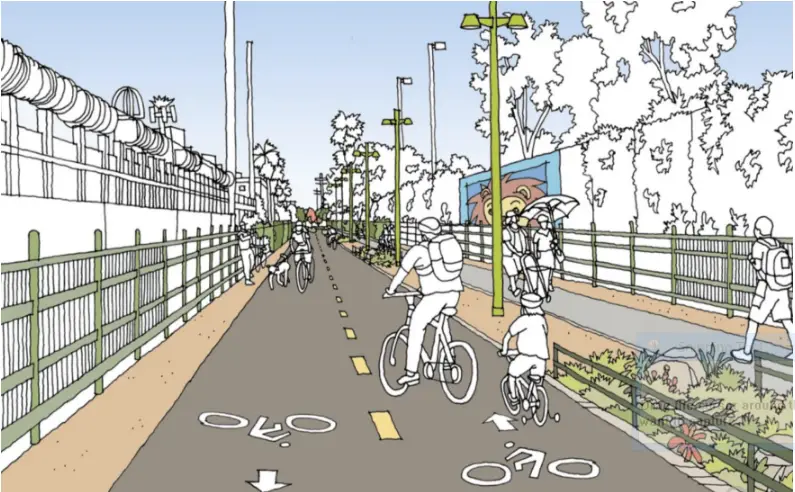A “Rail to Rail” project that also involves the construction of pedestrian and bike pathways, recently broke ground in L.A, California. Los Angeles County Metropolitan Transportation Authority (L.A. Metro) will oversee the project, which is estimated at $ 143 million. Going forward, L.A. Metro intends to construct the pathway over an abandoned freight rail corridor owned by the agency. The project is expected to reach completion by 2024.
Mayor Eric Garcetti, at the groundbreaking, commended Metro’s commitment to mobility, which he said transcends buses and trains. He also said the Rail to Rail project would improve mobility for the most under-served neighborhoods in Los Angeles. Especially since it provides a safe option for students using bikes to school or family going for a walk.
Also Read US$126 million road construction project awarded to IEA, Illinois
Renderings of the Rail to Rail project’s 5.5-mile route were also placed on display at the event. It follows Metro’s former rail corridor route from Inglewood to South Los Angeles, connecting two rail lines and a bus station. More precisely, the route creates links between Metro’s A (Blue) Line Slauson Station and the future Metro K Crenshaw station. This also includes the Silver Line rapid bus station at the 110 Freeway and Slauson Avenue.
Development plans for the Rail to Rail project
The Rail to Rail construction project involves building a dedicated walking path and two-way cycling lanes separated from street traffic. With the aim of providing significant safety for cyclists and pedestrians by reducing vehicle/pedestrian interactions. Metro officials also mentioned that the project’s landscaping design will feature hundreds of trees and several thousand shrubs. Additional amenities offered include lights, security cameras, directional signage, and benches.
Funding for the Rail to Rail project comes from several sources including the federal TIGER grant and Transportation Development Act fund. Other funding sources are L.A. County’s Repurposed Earmark, the State Active Transportation Program Grant, and CALSTA Soil Mitigation Grant. Proceeds gotten from L.A. Metro’s 2008 Measure R sales tax will also be used in funding the project.
Meanwhile, planning is still ongoing for a proposed second phase of the Rail to Rail project. This second phase, referred to as Rail to River, will extend the current route eastward to the Los Angeles River. Based on the latest census data, this corridor has the highest percentage of households in LA without access to cars.
